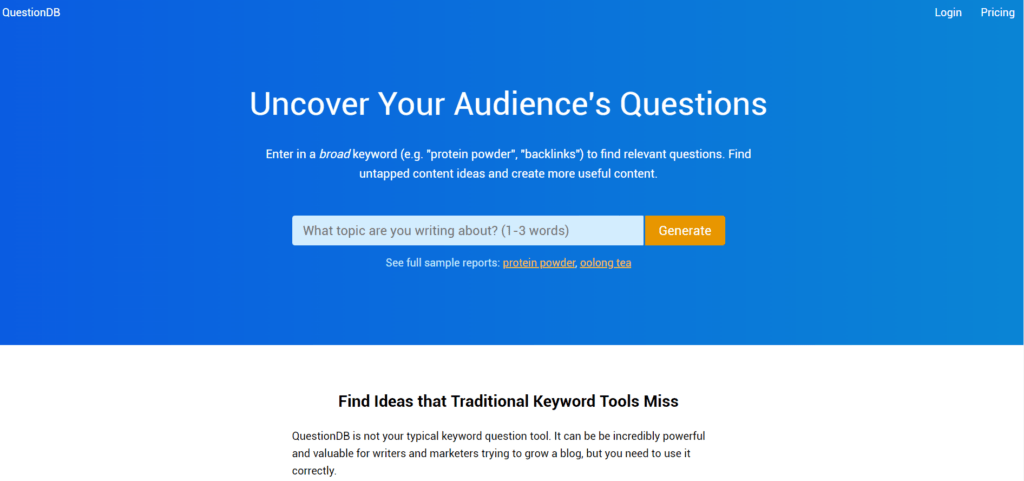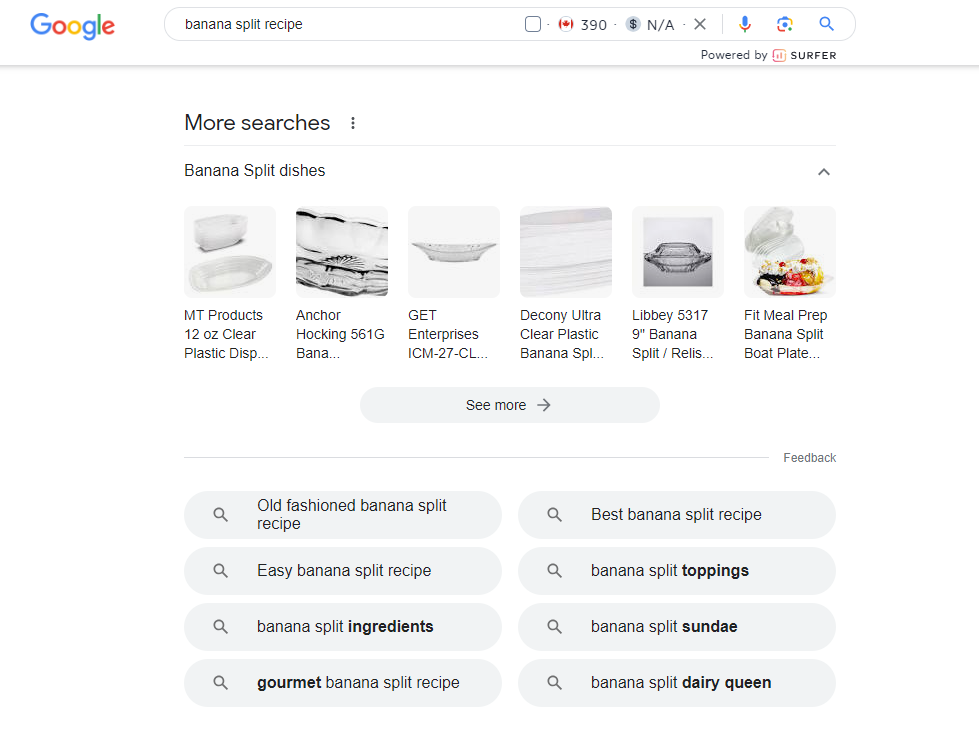Search engine optimization (SEO) can seem super confusing to many business owners. For some, it’s a concept that’s so foreign that they don’t bother with it at all. After all, there’s already enough to do with running a business – how important is it to rank higher on search engines, anyway?
Answer: Very.
SEO is the gateway to organic traffic to your website. And more traffic to your website leads to conversions, which leads to more sales.
But let’s face it – SEO can be complex and ever-changing, leaving many website owners scratching their heads.
So, when it comes to SEO, it’s important to know the basics – at the very least. From there, you can build your knowledge base and implement more SEO tactics as time goes on.
Below, we’ve outlined ten of the easiest ways to start ranking higher on search engines like Google.
Understanding SEO and Its Importance
Search engine optimization (SEO) is optimizing your website to rank higher in search engine results pages (SERPs). It combines on-page and off-page techniques that help search engines understand and index your website’s content more effectively. The ultimate goal of SEO is to drive organic traffic to your website, increase visibility, and attract potential customers.
Once you get those customers, you must do the work to convert them into sales. You can encourage them to sign up for your blog posts, subscribe to your email newsletter, or reach out for more information about a product or service.
To simplify the importance of SEO, consider the last time you clicked on the second page of search results. More than likely, it’s been a while. Research shows that most users click on one of the top positions. Thankfully, there’s a lot you can do to help your site start showing up where it matters.

#1: Update It Regularly
This tip is about as basic as it can be regarding SEO. If you build a site and never update it for years, Google views your site as stagnant – and no longer ranks it favourably on SERPs.
To combat this, update your site regularly with new imagery, blog posts, testimonials, or products/services. Adding fresh content to a site flags Google to come back and recrawl it, potentially rewarding you with higher search results rankings.
#2: Speed It Up
The average human has a shorter attention span than a goldfish (8.25 seconds compared to 9 seconds).
Think of the last time you headed to Google. You likely wanted the answer to an inquiry and didn’t want to wait long.
The same goes for your potential site traffic.
The faster your site loads, the quicker your traffic gets answers to their inquiries – which directly impacts Google rankings.

Make sure your site loads as optimally as possible using Google’s PageSpeed Insights. The helpful tool will also provide opportunities for improvement, which can include:
- Reducing web page file size,
- Compressing images, and
- Using a better host.
#3: Make It Mobile
Having a website that’s not mobile-friendly shouldn’t even be an option these days. Yet, shockingly, there are still some sites that simply do not load properly on mobile devices.
Since 9 out of 10 internet users access the internet using a mobile phone of some kind, you’re seriously missing out if your site is one of them.
If someone lands on your non-mobile-friendly site through a mobile device, they’ll quickly leave – contributing to a high bounce rate. This, in turn, creates lower search engine rankings.
Take the time to test your website on various devices to ensure it provides a great user experience despite the screen size. You’ll have to implement some responsive design techniques if it doesn’t.

#4: Refresh Old Content
If your current site has outdated or unhelpful content, addressing it can significantly improve your SEO.
You see, Google likes to reward sites that have content that matches users’ intent. So, if some of your current content is no longer getting traffic, it’s being viewed as invaluable and can actually be hurting your rankings on SERPs.
In 2022, Google launched a “helpful content update.” The update rewards sites that provide easy-to-digest information that readers are looking for. Part of the algorithm that ranks websites factors the length of time users spend on pages. As a result, Google can quickly tell if your site’s helpful or not.
If you’re finding that your site does contain a lot of outdated content, then it’s time to refresh it. And if there’s content not providing much value, consider setting up some redirects.
#5: Use SEO Analytics Tools
How will you know what’s working and not SEO-wise if you’re not monitoring and analyzing your SEO performance?
To start, set up Google Analytics on your website. Doing so helps you track important metrics such as website traffic and bounce and conversion rates. Check these metrics regularly to identify trends and adjust your SEO strategy.

For additional insights, utilize tools like Google Search Console to monitor your website’s performance in search engine results. You can optimize your content better once you identify the keywords driving traffic to your site.
Be sure to also watch your website’s crawl errors, index status, and sitemap. You want to confidently know that search engines can access and index your web pages effectively.
#6: Write the Right Stuff
Google’s primary purpose – to organize the world’s information and make it universally accessible and useful – relies on finding content that matches search intent.
So, no matter how much SEO work you do on your site, you won’t get results if you publish unhelpful content.
Creating high-quality, engaging content requires understanding your target audience and their needs. Conduct research to pinpoint the topics and questions they’re searching for online, then match your content to those inquiries. Rather than simply re-writing readily available content, provide a unique insight and add extra value to the topic.
Besides writing the right stuff, remember to make your content user-friendly, too:
- Make sentences and paragraphs short and easy to digest,
- Use headings, subheadings, and bulleted and numbered lists to structure your content, and
- Include an image, video, or infographic at each scroll to make your content visually appealing.
By addressing your target audience’s pain points in the content you publish, you’re fulfilling Google’s purpose of providing helpful content. As a result, your search visibility will improve, and other websites may link to yours. The more eyeballs you get on your content, the higher your SEO ranking will climb.
#7: Conduct Keyword Research
You know you need to create valuable content but aren’t sure what to write about.
That’s where keyword research comes in handy.

After brainstorming a list of relevant keywords related to your business, partner up with an SEO tool. The paid version of UberSuggest is our favourite, but other popular options include SEMrush and Moz. Keyword research can get confusing, but the bottom line is to narrow your list to keywords with high search volume and low competition.
Once you know which keywords to target, a few techniques are available to help you narrow down some trending topics. You can appear in search results if you write about them using the right keywords.
One way is to use QuestionDB (a tool similar to Answer the Public) to discover question keywords.

Simply input the topic you’re writing about to discover trending questions related to the topic. Using these questions, you can then create more helpful content.
The “searches related to” area of Google’s desktop search is another great way to discover trending topics and keywords.

#8: Optimize On-Page SEO
As mentioned earlier, there is both on-page and off-page SEO. Besides page load speed, other on-page SEO factors include title tags, headings, URL structures, image ALT text, page content, and internal linking.
In short, you can have the best content on a specific topic or niche. But you won’t get the rankings you deserve if you don’t optimize it properly with on-page SEO.
Besides completing your keyword research, you need to incorporate the keywords correctly in areas including:
- Your title and headings,
- Throughout your content (without keyword stuffing!), and
- URL structure.
The same goes for Image ALT text. If you can include a keyword in this short description of the images used on your site, go ahead. But more importantly, this description should describe the image to anyone with an accessibility issue.
Linking from one of your site pages to another – a practice known as internal linking – can help keep website traffic on your site. The longer they’re on your site, the longer their “Session Duration” is, and the more valuable your site looks to Google.
#9: Build Quality Backlinks
Having links on high-quality websites is one of the best techniques when it comes to SEO. Why wouldn’t others want to link to your site if you publish great, highly shareable content?
Thankfully, some tools are available to make identifying backlink opportunities (an off-page SEO factor) as easy as possible. For example, SEMrush offers this On-Page SEO Checker that highlights certain websites you should target for backlinks. It also has a Backlink Analytics tool that helps you locate your competitor’s backlinks.

Once you’ve identified some potential websites to link to, contact them and offer to provide valuable resources. Include a link to your website within your content to increase referral traffic.
Guest posting can also be super helpful. In this practice, you’ll contribute content to another site in your niche. The links from these posts can then help you boost your SEO ranking.
#10: Stay Updated with SEO Trends and Best Practices
The world of SEO changes quickly, and you need to keep up for long-term success.
At least annually, review and update your SEO strategy based on the latest trends. Regularly audit your site to identify areas for SEO optimizations and make any suggested improvements.
Staying abreast of the more up-to-date best practices should also be a priority. You can do so by:
- Subscribing to reputable SEO blogs and newsletters,
- Attending industry conferences, webinars, and workshops,
- Joining online communities and forums to discuss and exchange ideas, and
- Hiring an SEO expert.
Conclusion on How to Improve SEO of Websites
At the end of the day, SEO requires ongoing effort, time, and commitment.
Although you may start seeing results within a few days, major results can take six months to a year to generate. But by following our tips above, you’ve already made the first steps towards improving your SEO.
